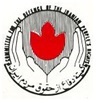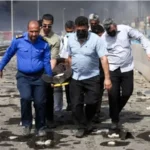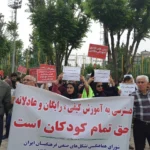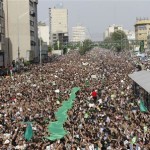
On Dec 30th, after 8 days of strike, the workers of Iran National Steel Industrial Group (INSIG) in Ahvaz, in south of Iran, decided to go back to work after they were promised that the employer will implement the Job Classification Act at this complex by evaluating jobs, recognizing permanent employees, and paying staff according to the classification parameters. They’ve given management 3 days to make partial payments in arrears and continue with the full implementation of the classifications and wage adjustments.
Mehdi Kouhestani, Iranian Labour Rights expert, has written a report of the recent events in INSIG-Ahvaz. The Following is an excerpt of his report.
Workers are making demands, and the reason for these demands is very clear. when the employer singles out and blocks 38 workers from entering the workplace by deactivating their entry passes, a few thousand workers automatically stopped working in solidarity. The main demand of the workers is that all workers be able to return to work. These Workers have shown that they cannot be easily silenced, even as drones hover above the workers rallies to identify and subsequently harass, arrest, and dismiss them.

February 26, 2024 will mark the 50th anniversary of the passage of the Job Classification Act in Iran. This law assigns wages to levels of the job description and the scope of the workers’ responsibilities as detailed in the International Labour Organization’s Standards Committee 433-page document. The law recognizes the title of the job, the definition of the job, and the qualifications needed for the job. Today, fifty years after its enactment in Iran, according to government officials “the entirety of the regulations of the Job Classification in the Act have never been published”. Why haven’t the parameters of the classifications been published after four decades? Because the Act is not being implemented. This is an Act where nothing concrete whatsoever is evidenced outside of the passage of the Act.
That the majority of wage earners today in Iran are not covered by this Labour Law and that their jobs remain unclassified has become status quo in Iran. In the past three decades, we have seen thousands of spontaneous protests, strikes, sit-ins, and work stoppages in various economic sectors, from education, healthcare, and transportation to agriculture, automotive, energy, and steel industries. Job classification also empowers workers by providing parameters of job security where full-time hours, for example, classify a position as permanent. Without job classifications, workers can work full-time for years and be held in the precarity of temporary positions and be paid at varied rates even while doing the same work. In particular, workers at the INSIG work in a garrison like environment where the employer can at any moment deprive the worker of the right to make a living by simply disabling their entry cards. The Worker lives in constant stress of becoming unemployed.
The same system of saddling workers with uncertainty has been pursued since the government of Rafsanjani’s Minister of Labour Tavakoli until today’s Mortazavi, Raisi’s Labour Minister. These measures are low-level versions of the economic schools of dictatorship countries; privatization and the lack of laws of accountability of employers and the subsequent precarity and fear of the future keeps the worker in perpetual anguish. handing over of the economy to the IRGC, together with the destruction of the right to non-contract employment for workers and the imposition of temporary contracts, have sunk the country’s economy into collapse over the past three decades.
In Iran’s economy, workplaces and the material-intellectual and social capital have been entrusted to the security-economic mafia of the IRGC’s Kleptocracy. This bankrupt economy is still an economic symbol in only a few sectors, which includes the INSIG.
In all the protests of the past three decades for the implementation of job classifications, the security forces have been able to partially quell the struggle. However, both the education and steel sectors have continued the struggle, which relies on worker organization from on the ground and unwavering perseverance in their pursuit. Iranian workers are aware that Iran is worse than Iraq, Syria, Pakistan, and Bangladesh when it comes to meeting the standards of international labour law.
The recent strike of the workers of the INSIG- Ahvaz brought a few issues back to the fore of the labour movement. This strike has focused our attention on the question of wages and job classification and has pushed management to act. The familiar cycle of partial measures, empty promises and token wage increases are designed to dampen worker protests and wear out worker energies. But the workers of the INSIG showed that it is the workers who define the terms of the battle field. In organizing and expressing solidarity that precedes any kind of struggle they were steadfast in action. They maintained the unwritten principle of trusting in their own strength and in themselves and stopped working in the true sense of the word. They made all believe that not all associates could be bought or silenced, and that how complicated is the workers’ movement in the protests and strikes.
Workers of the INSIG, the majority of whom are university graduates, enter the workplace and work alongside 60-ton induction and electric arc furnaces operating at 1800°C. They control equipment that are beyond the comprehension of the government authorities who come from Islamic Higher Education Schools. And yet, even owning the cheapest car is difficult for these workers, let alone owning a home, etc. Of the few thousand workers of the INSIG, only about 30 are fully employed workers. Two-thirds of workers are contractors or sub-contractors. One of the urgent demands of workers is that these workers should be employed by INSIG. About one-third of the labour force is comprised of daily workers sent by employment agencies (as general labour) who are paid as general labour. But these same workers, who are treated as general labour, run all the machinery next to the melting furnace in the production line. These workers are paid very low wages with often more than 100 hours of overtime per month. The true question of workers is that firstly, why should not all workers have the same employment conditions. In a workplace where skilled workers are hired, why shouldn’t they all be paid the same wage regardless of contract status.
The difference between the strike of INSIG workers and other similar strikes is that the workers here are very closely connected, are class-conscious, and have been able to produce respectable representatives through these struggles. Due to the repression, the workers meet in several circles in the workplace and outside the workplace, but they are unanimous in their struggle while setting ideologies aside. They have tied up the demands of job classification, job security, equal pay, and other demands for decent work without reference to any ideology.
The recent strike at the INSIG-Ahvaz is the result of several years of struggle for which the workers have paid a heavy price. Workers have sustained their fight in the face of intimidations by government propaganda. Regardless of what the ultimate outcome of this strike will be, it should be welcomed. Further important protests are expected in future. The right to demand job classification is the key to future struggles of Iranian workers. Workers know that without job classification their job security will continue to deteriorate. They should be placed in their real job positions, because they have invested and paid a price to acquire skills. The economic policy of all the enterprises is to make workers believe that as long as they have a job, they should be satisfied, should lower their expectations and resign themselves to increased working hours and hold several jobs in order to make a living and survive.
This strike, with its culture of struggle, is a new chapter in the workers’ struggles in Iran. The demand for the implementation of the job classification is a serious struggle against the neoliberal policies of temporary contracts and widespread lawlessness in society at large.



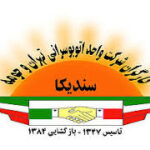







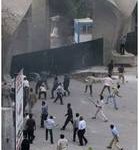
 Posted in
Posted in 